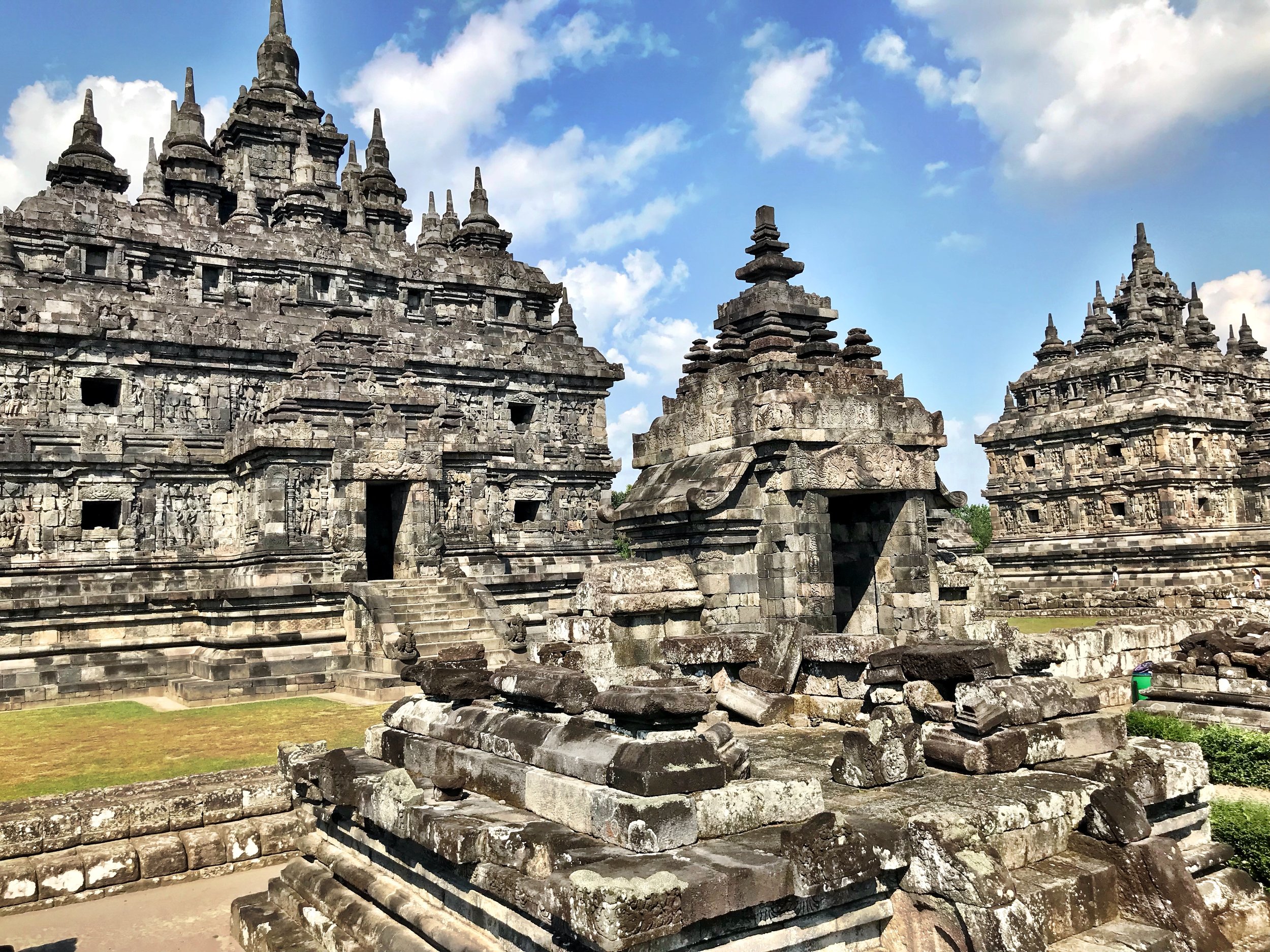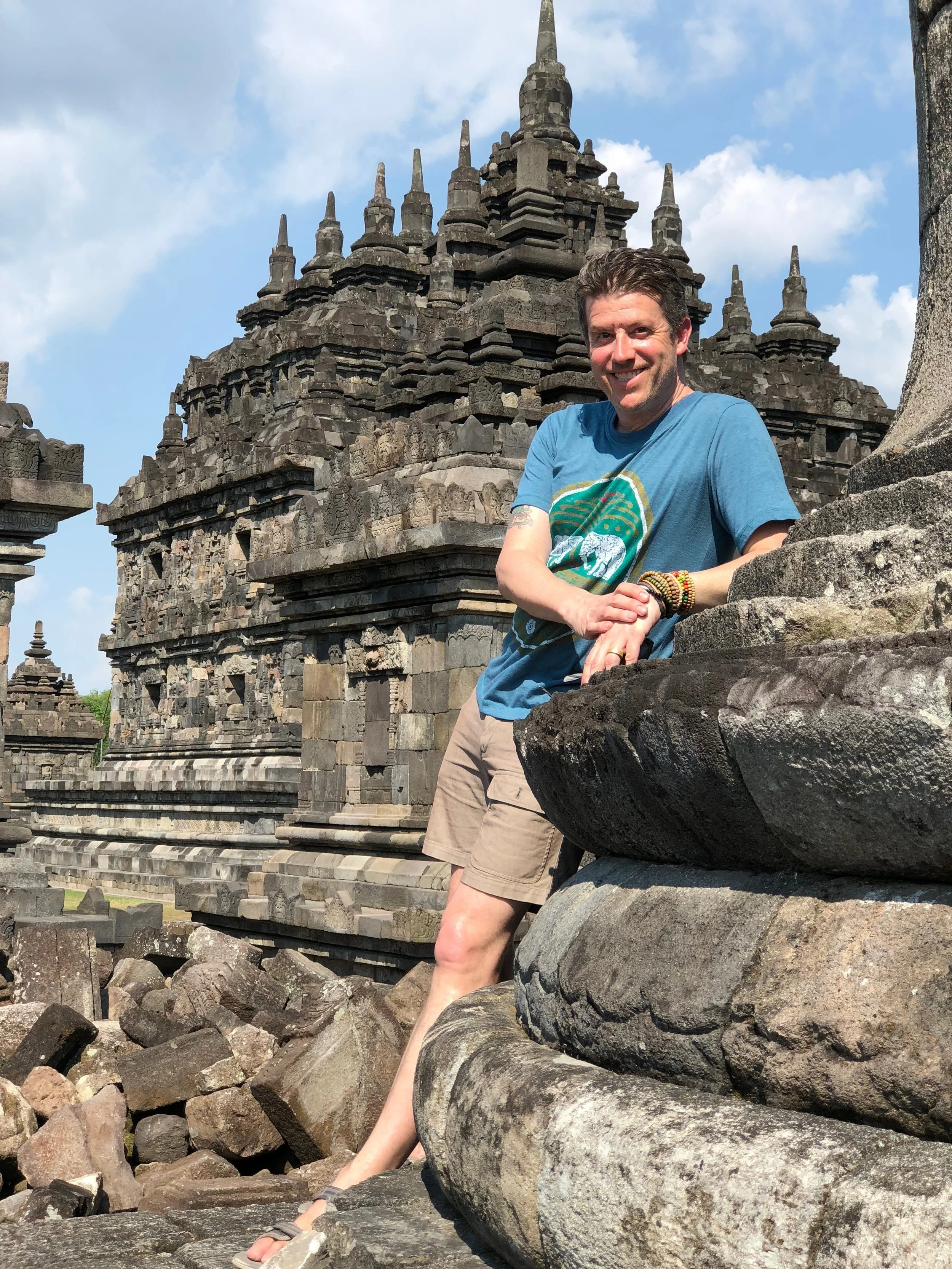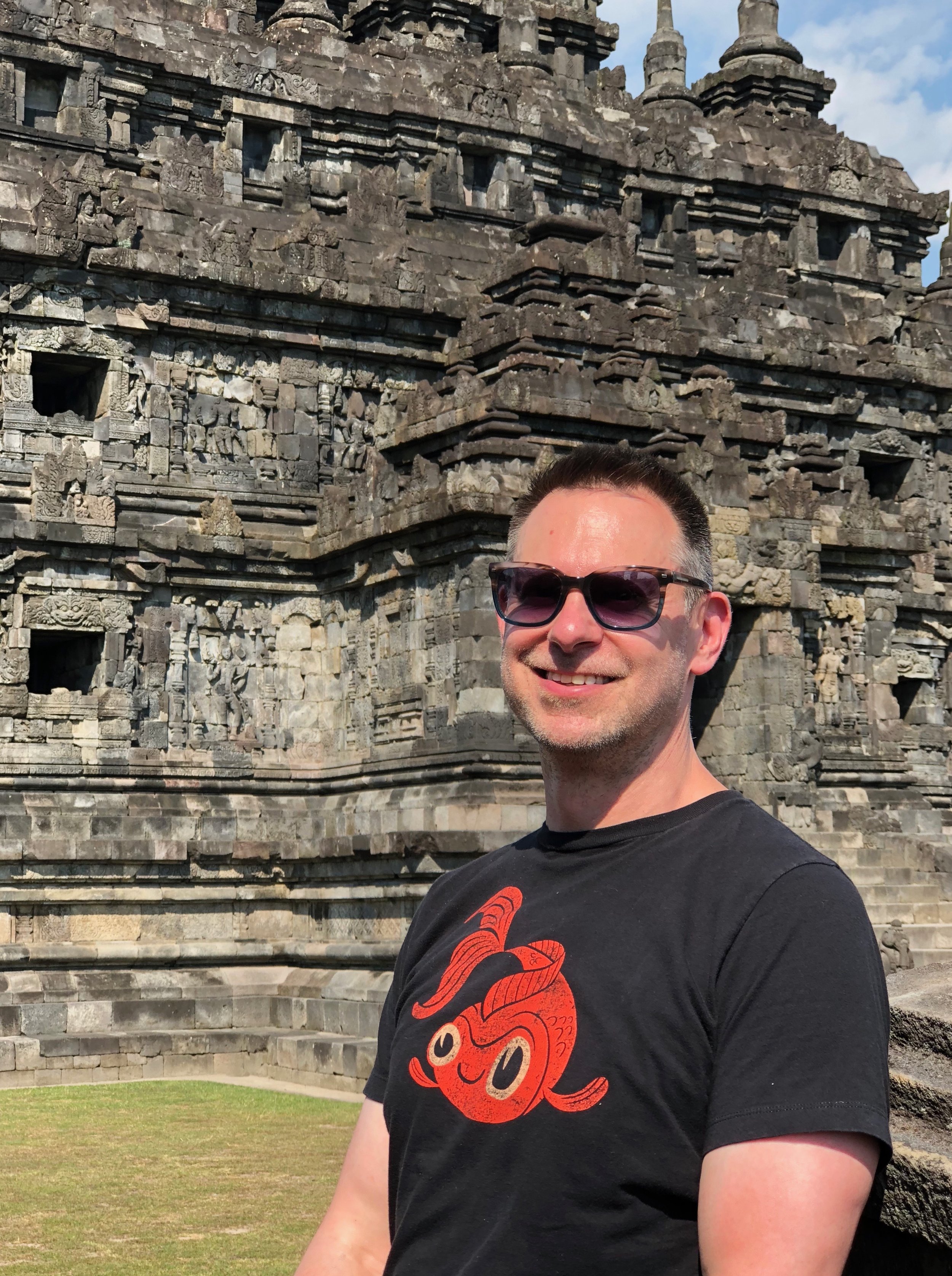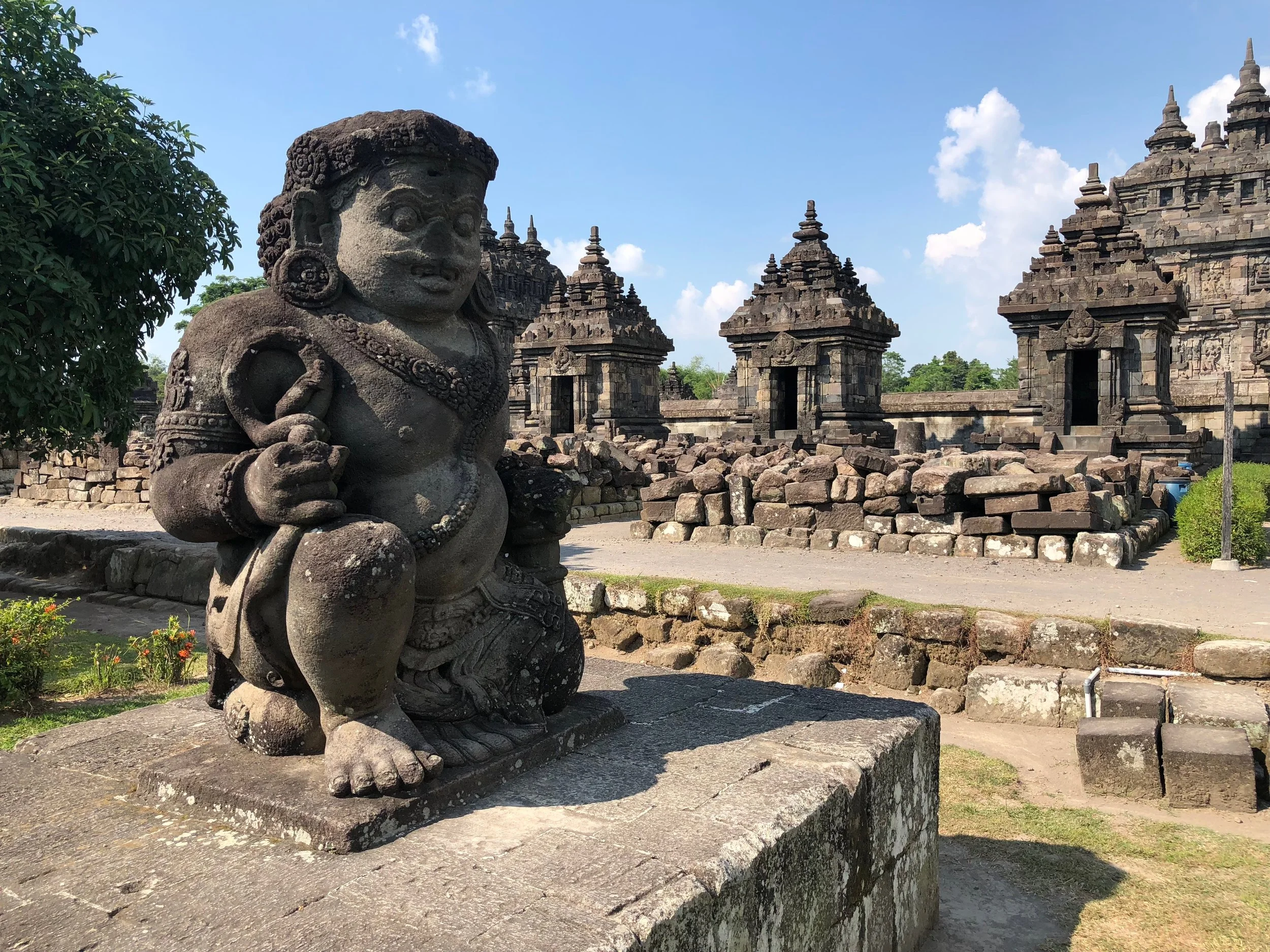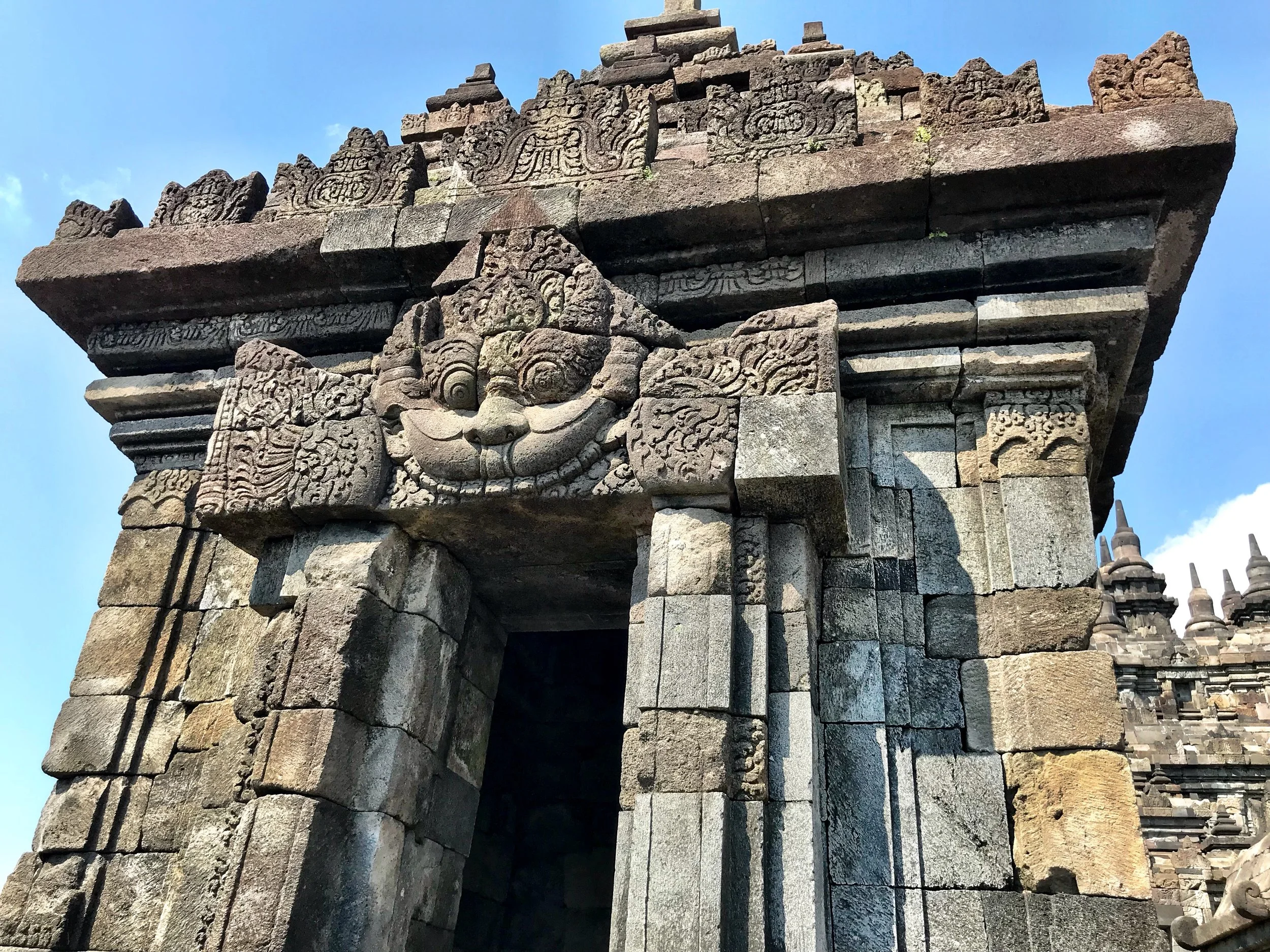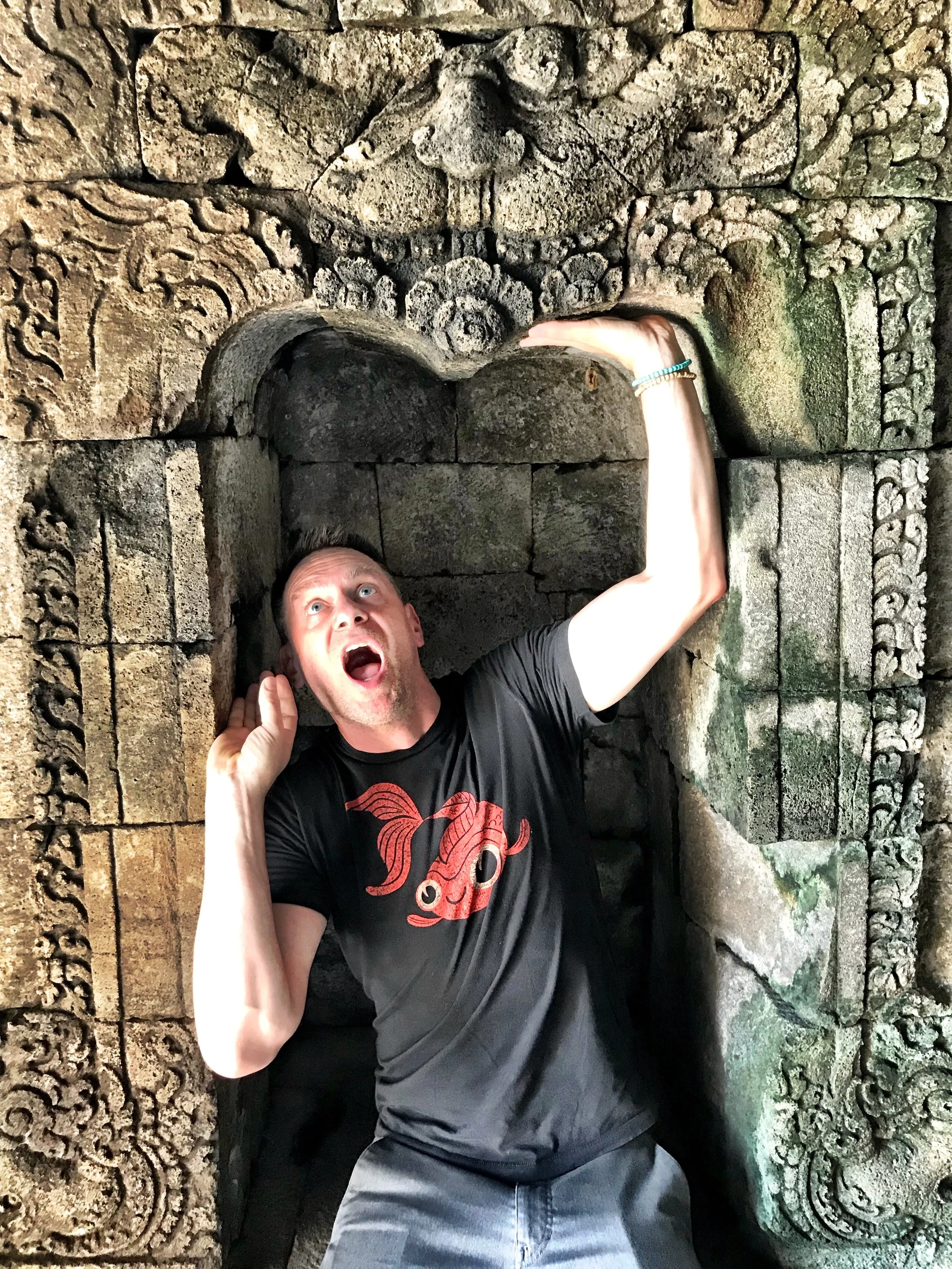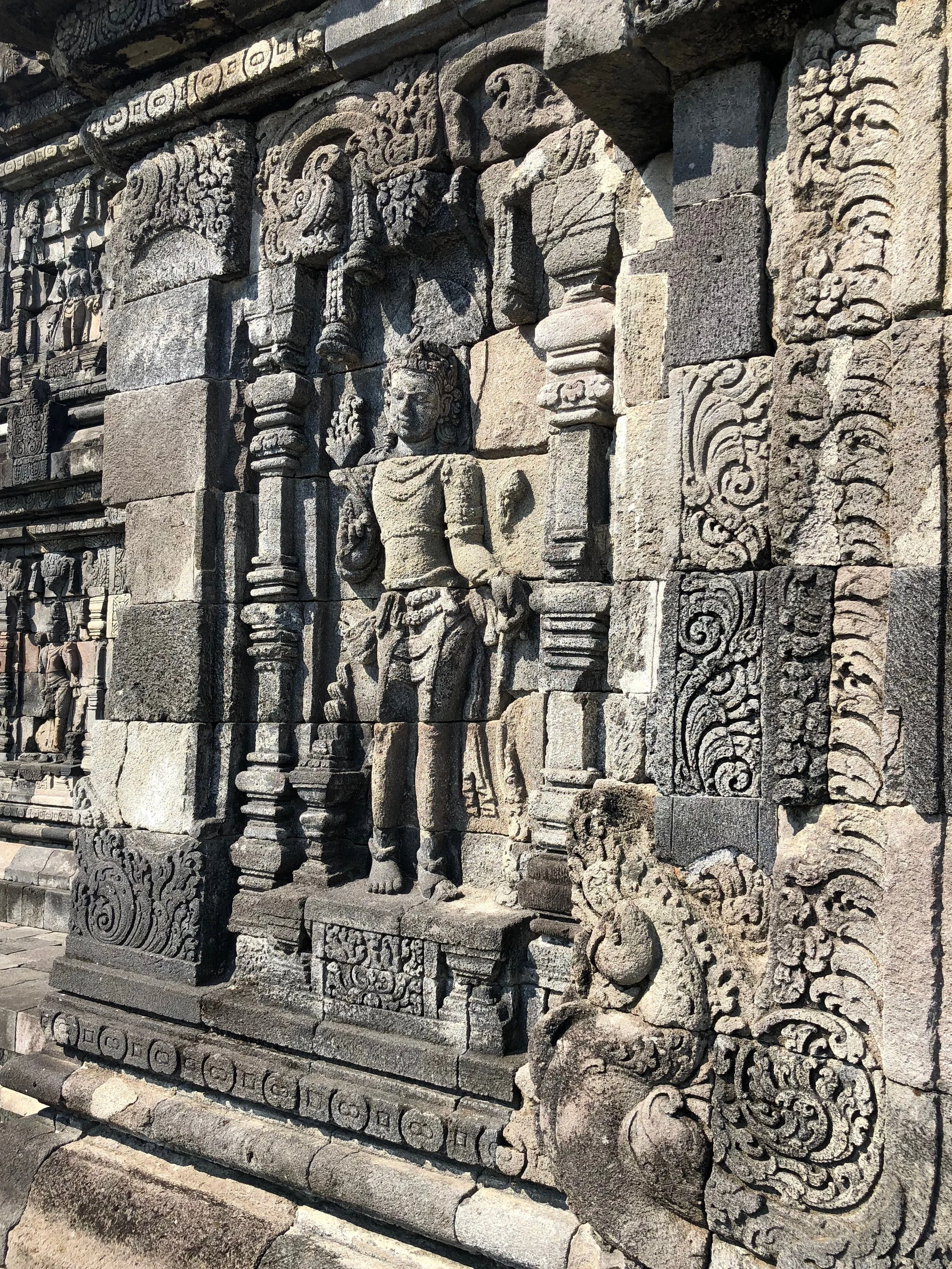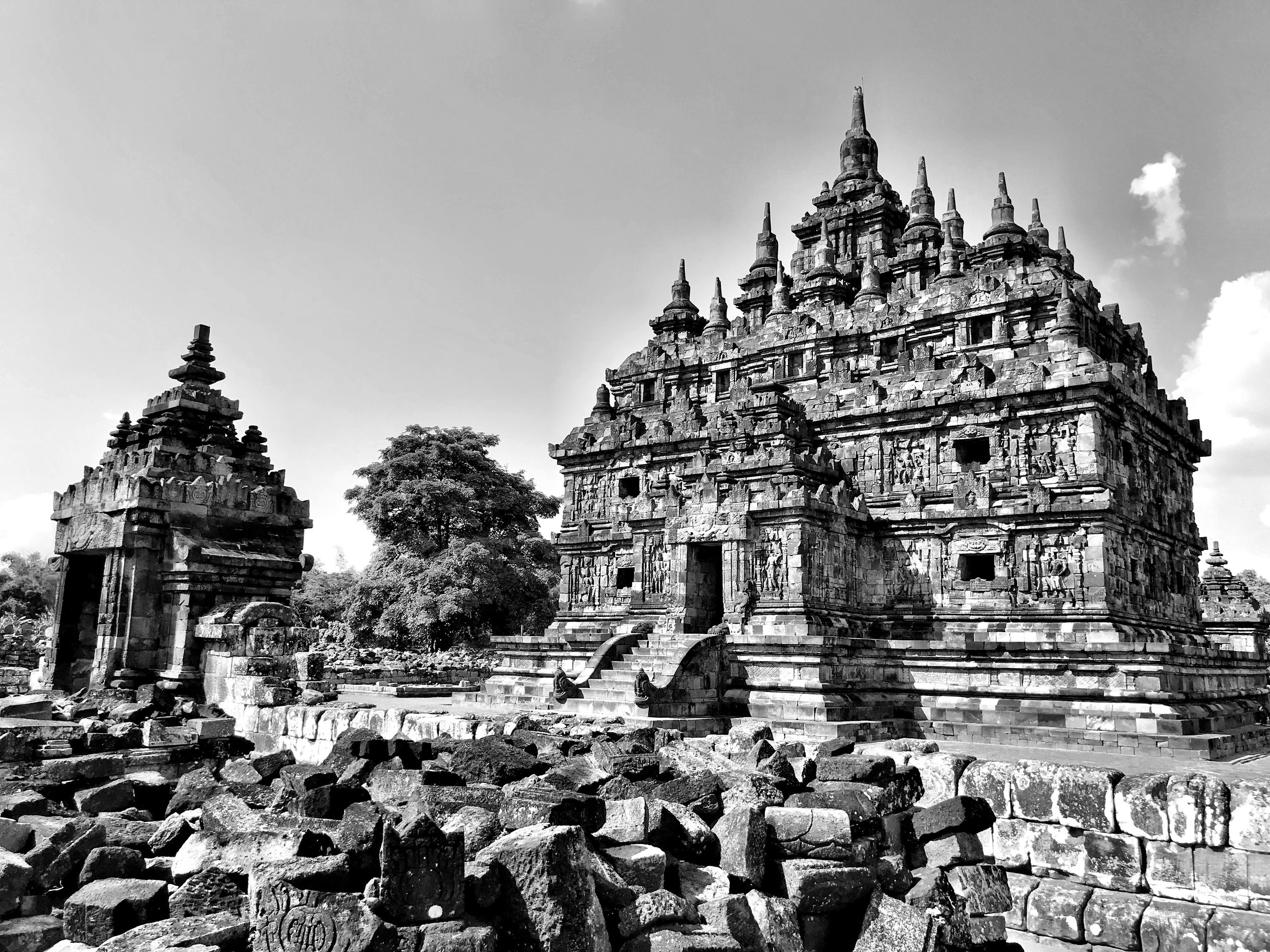Explore the twin temples of Candi Plaosan, built by a Hindu prince for his Buddhist bride in Central Java.
Plaosan is an often-overlooked addition to a day trip to Prambanan
Our Borobudur guide, Wishnu, was showing us a few pictures that other tourists and guides had shared with him, when he paused to play us footage taken from a drone, soaring above a couple of stunning temples.
“What’s that?” I asked, and then, “Can we visit it?”
Wishnu replied that locals call these the Love Temples, and of course we could visit them — we just needed to let our driver for the Prambanan trip know that we’d like to add it to our itinerary.
“The great love story began with an interfaith union between a Buddhist princess and a Hindu prince.”
The northern complex is the one worth exploring
In the Name of Love
The site is officially called Candi Plaosan, a complex of Buddhist temples located in Klaten, Yogyakarta, a short distance north of the Hindu temples of Prambanan. What makes it truly unique is that both complexes were built by the same Javanese king.
Plaosan is a testament to the love that brought a Hindu prince and Buddhist princess together
Wally climbs over the stones at Plaosan
Duke on the temple complex
Looking toward the female viharn (monastery) from the one for males
There are piles of rubble all over Plaosan, testifying that there’s still a lot of restoration work to be done
There were once many more of these smaller shrines
The great love story behind Plaosan began with an interfaith union between the two ruling dynasties of Central Java during the 9th century. Pramodhawardhani, a Buddhist princess and daughter of Samaratungga, the last known king of the Sailendra Dynasty, married Prince Rakai Pikatan, from the Hindu Sanjaya family. When Pikatan ascended to the throne, Pramodhawardhani became his queen and was given the name Sri Kuhulunan. Religious differences didn’t separate the couple, and together they played a significant role in building some of the finest Hindu and Buddhist temples of Central Java.
Plaosan is a 9th century complex built at the height of the Mataram Kingdom. Once part of a single site, Plaosan Lor, the northern main temples and the smaller Plaosan Kidul to the south are now separated by a public road.
Because Plaosan isn’t too well known, you could have the temple grounds virtually to yourself
A Temple for Men, A Temple for Women
One of the first things Wally and I noticed as we entered the temple grounds of Plaosan Lor were four imposing stone ogres. Known as dwarapala, the stocky and squat semi-kneeling guardians grip a short thick club in their right hand, while the other rests upon a bent left knee.
Creatures known as dwarapala guard the entrance to the temple
This giant will fight to protect Plaosan
Like Prambanan, the sanctuary follows a square grid system with groups of smaller ancillary shrines laid out in orderly rows. The buildings were constructed without mortar, their stones quarried and precisely cut. A small number have been reconstructed, standing amongst piles of gray andesite blocks yet to undergo restoration.
The temples are quite similar —but we’re pretty sure this is the one for men
And this is the temple for women (actually living quarters for female monks)
At the center of Plaosan Lor, the two nearly identical structures were viharas, meaning they were designed as Buddhist monasteries.
Above the arched gate portal leading to the temple is a Kala head whose gaping mouth symbolically swallows our mortal impediments and permits passage into the sacred inner courtyard.
Some entryways in the inner temple are shaped as the mouth of the deity Kala
Legend has it that Kala’s mouth crushes those impure of heart. Poor Duke!
Towering stalagmite-like spires crown the multistory vihara, rising like the jagged peaks of Mount Meru, the holy mountain abode of the gods, and a pair of mythical serpentine makara form the railings of the staircase leading to the monastery — a small Kewpie-doll like dwarf figure stands within the creature’s gaping jaws.
The monument sits on a high rectangular stone podium with an apron that extends several feet outward, forming a porch where visitors can circumambulate the structure. Its exterior walls feature false windows, an architectural element meant to maintain symmetry on the façade. These are embellished with distinctive Kala-makara ornamentation, but unlike the ones above the gateways, these depictions of include a lower jaw with a wide mischievous grin similar to the Cheshire Cat in Lewis Carroll’s Alice’s Adventures in Wonderland.
Kala is a giant who was born from Shiva’s sperm
Enshrined within the central hall are a pair of headless seated Bodhisattva statues, one that is more or less a torso, presumably plundered and decapitated by relic thieves. An empty pedestal between the pair possibility held an enthroned bronze Buddha.
There’s not a whole lot to see inside the temples — mostly seated statues of Bodhisattva, those who have reached enlightenment but remain behind to instruct others
Some of the statues inside the temples are now decapitated
Intricately detailed reliefs of various demigods and deities adorn the exterior walls. According to a theory presented by Nicholas Johannes Krom, head of the early 20th century Dutch Archeological Society, the two vihara were sponsored by influential patrons and built for male and female monastics — not as a tribute to love, as locals prefer to believe.
Bas-reliefs line the exterior of Plaosan
The south-facing vihara depicts male figures, while the north depicts female figures. The south temple was probably a monastery for Bhikkhu monks, while the north housed Bhikkhuni nuns.
You can see the construction style in action: squares of interlocking stone
Deities and demigods adorn the outer walls, which you can circumambulate on a platform
In the distance, behind the vihara, a celebration complete with multicolored garlands made of balloons was taking place. We passed through a side gate in the low wall separating the two temples and explored the second vihara.
Whether or not Plaosan was constructed as a symbol of Pikatan’s devotion to Sri Kuhulunan or as a display of political reconciliation to placate the Buddhist Sailendra Dynasty, it certainly makes for an interesting story. –Duke
Candi Plaosan
Jalan Candi Plaosan
Plaosan Lor
Bugisan
Kecamatan Prambanan
Kabupaten Klaten
Jawa Tengah 57454
Indonesia

